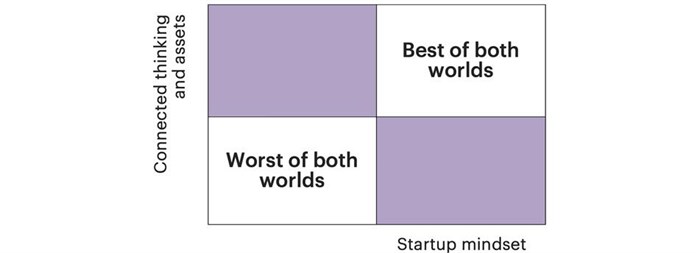
Subscribe & Follow
#AfricaMonth
Jobs
- Head: Occupational Health Cape Town
In the news
How businesses can be innovative without losing their core focus

So as a large corporate, how can you manage this need to grow the core business – that has made you successful – while also being innovative and creating the new? Assuming this is relevant to your business, here are five things to consider:
1. Not an either/or debate
You must grow the core and create the new. Most organisations are trying to do either one or the other, which doesn't work. Given the speed of change, if you're focused on growing the core, you will likely miss the plot, and likewise, if you're only thinking about creating the new, you will also lose out. A good balance is necessary where you do both at various stages of the business life cycle. It is a constant process to discover, execute, assess and repeat.
2. Not a once-off
Many organisations think of it as a short exercise that is done when a need arises. They will innovate and create the new, and once they figure it out, they can stop. It is not the case, and it is not a once-off solution to a growth dilemma but rather a constant journey you must encounter frequently.
3. A clear choice - worst or best of both worlds
Let's consider the matrix below. One axis portrays how you think about connected thinking and assets, while the other is your startup mindset.

Ideally, you want to be in the top right quadrant where you incorporate connected thinking and assets and have a startup's agility. Unfortunately, most corporates are stuck in the bottom left – the worst of both worlds. Imagine a retailer recognises an ample opportunity in the market and decides to launch a new business in something they were not doing before. If they disregard their current assets, partners and customer base, they will enter with a lean startup mentality.
Copying lean startup methods and tools when you're not a startup is hardly advisable, but many corporates still opt to compete with startups at the startup level. They try to create the new by competing with the same tools a startup has, ignoring what they have in the core business. It makes it very hard for them to succeed because they struggle with making quick decisions, innovating, taking risks and failing. They're not fully applying the startup mentality or mindset, but they're also not leveraging the connected thinking and assets they have in their core business.
4. Ecosystem-centric
A lot of organisations have been through what I call cycles around centricity. At one point, organisations were very product-centric. They then moved to be arguably customer-centric and, more recently, employee-centric. However, you must be ecosystem-centric to grow the core while creating the new. This approach means including ecosystem partners in your business journey to success. It implies including vendors and manufacturers at the centre of your thinking rather than as an afterthought. So, it is not only about the product and customer and employee, but also the partner.
These partnerships are redefined as "unusual partnerships". One clear example of unusual partnerships is when you partner with your competition or a competitor of one part of your business. The advantage is shared learning and experiences. One has to be highly focused on what you should be doing versus what others can do for you.
5. Future-looking mentality
Lastly, you need to take a longer-term view of what is core for you. It means having a future-looking mentality. If you take the example of Tesla, what is its core? Is it manufacturing, software, artificial intelligence or something else? Once you have clarity, you can decide how to leverage partners to do things that may not be your core business and what the partner might be better at delivering. Trying to accomplish this can be almost impossible. So you must become razor-focused on what you do versus what others do for you.
Is all of this practical?
Playing in the best of both worlds is challenging but achievable. Are there a lot of companies in South Africa and the world that do this now? No, not many, because it is hard. The five things are straightforward but practically hard to implement alone. You need to prioritise and focus by asking what your core business is? Is it a fantastic product? Is it the distribution power of the company? Can you partner with another organisation to achieve better results than on your own? The point is to start shifting the mindset and doing both as a process. Otherwise, it is easy to fall into the trap of not doing anything at all and risk missing out on exponential growth.
About Luis Rodriguez
Luis Rodriguez is managing director for strategy and consulting at Accenture in Africa.- Drakensberg Boys Choir brings musical harmonies of hope to Joburg20 May 17:14
- Why your flu shot matters this winter20 May 15:54
- Medshield returns to the Suncoast ECR Big Walk 2025 on 18 May16 May 13:12
- Closing the gender gap in the ICT industry through mentorship08 May 16:29
- Data centre neutrality – hyperscalers and Seacom as the carrier of carriers07 May 13:58
Related
Biggles Removals weekly update on Midrand’s property, infrastructure and moving activity 13 May 2025 Consultancies are eating agencies’ lunch, and they're not slowing down 8 May 2025 How to prepare for deepfakes – South Africa’s new digital threat 3 Apr 2025 Alpha like Z: Patterns of growing financial confidence across emerging generations 10 Feb 2025 Nvidia ‘Mega’ Omniverse is digital win for industrial engineers 7 Jan 2025 Consumer insights agency, KLA, reveals the Quarterly Buzz Results for Q3 2024 19 Nov 2024













